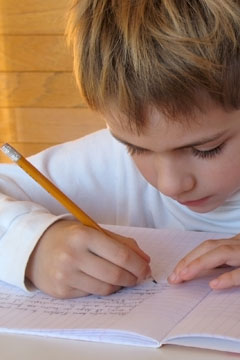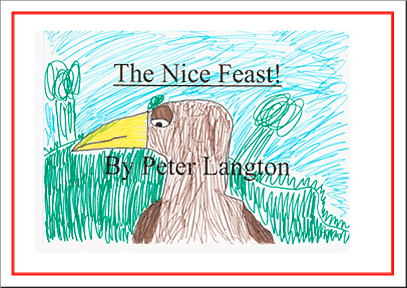Education
Aboriginal literacy rates
Literacy rates among Aboriginal students are lowest in remote communities. Reasons include low literacy of the parents and poor school attendance. Initiatives like the Accelerated Literacy Program try to bring literacy to a similar level to that of their non-Aboriginal peers.

Wishing you knew more about Aboriginal culture? Search no more.
Get key foundational knowledge about Aboriginal culture in a fun and engaging way.
This is no ordinary resource: It includes a fictional story, quizzes, crosswords and even a treasure hunt.
Stop feeling bad about not knowing. Make it fun to know better.
Selected statistics
-
18% - Percentage of Aboriginal students who failed to reach the national minimal reading & writing standard in 2015. Percentage for non-Aboriginal students: 6%. [1]
-
51% - Percentage of Aboriginal students in the NT who achieved below the national minimum standard in numeracy in 2015; who achieved below the national minimum standard in spelling, grammar and punctuation: 61%. [1]
-
46% - Percentage of Aboriginal adults in Australia who are "functionally illiterate" [2]; which can be up to 70% in remote areas. [3]
Aboriginal literacy rates are low

Note: When we talk about 'literacy' we assume we mean literacy of the written word. Bear in mind though that many Aboriginal people were, and are, masters of oral literacy.
According to the Australian Bureau of Statistics nearly half of Australia's population lacks minimum literacy skills.
The literacy rate gap between Aboriginal students and non-Aboriginal students is "large and persistent" [1] and varies greatly depending on remoteness.
Across Australia in 2015, 78.7% of Aboriginal students and 95.6% of non-Aboriginal students achieved the literacy benchmark for Year 3.
But in the Northern Territory, only 42.5% of Aboriginal students achieved the benchmark [1]. The numbers are similar for numeracy in Year 3.
Year 5 Aboriginal students are still performing below non-Aboriginal Year 5 students, at 73.6% for Aboriginal students compared to 94.5% for their non-Aboriginal peers. When students reach Year 9, Aboriginal rates are only 5% higher than in Year 3.
| 2009 data; source: [4] | Year 3 | Year 5 | Year 9 |
|---|---|---|---|
| Numeracy | 70.6% | 70% | 68% |
| Reading | >60% | 85.4% | 89.6% |
| Writing | 73% | 88.9% | 91.1% |
Long-term trends show no overall national improvement in Year 5 reading between 2008 and 2015, but Year 5 Aboriginal students had improved. The same trend was clear for Year 7. At Year 9, the national reading achievement has been stable between 2008-2015, including for Aboriginal students. There were no changes in mean numeracy achievement for year three Aboriginal or non-Aboriginal students between 2008 and 2015. [1]
Test score gaps between Aboriginal and non-Aboriginal are narrowest in the early years [5]. A study of preschoolers found that the gap was about one year, i.e. an Aboriginal 5-year-old performed at the same level as a non-Aboriginal 4-year-old.
By the time children are in late primary and early secondary school this gap has widened to about 2 years. Less than 30% of children tested for literacy in Years 3, 5 and 7 were able to read or write properly [6] leaving them with numeracy and literacy skills of five-year olds when they leave school [7].
The National Report on Schooling in Australia 2005 also found falling literacy rates the longer children stay in school. The number of children who met the Australian reading benchmarks dropped from 78% in Year 3 to 63.8% in Year 7, for numeracy numbers fell from 80.4% in Year 3 to 48.8% in Year 7 [8].
The fact that the gap widens over time suggests that improving school quality for Aboriginal people can help close the gap.
Low literacy prevents Aboriginal students from entering higher education and universities and leads to poorer health, lower self-confidence and alcohol abuse. [3]
Adult literacy rates can be equally low. About 40% of Aboriginal adults have low literacy across Australia, a figure which can be as high as 70% in remote areas. [3] Literacy programs help adults improve their lives and "get back on their feet". (see bottom of this article).
The 2015 NAPLAN results have revealed gaps in educational outcomes for Indigenous and non-Indigenous Australians are large and persistent.
— National Indigenous Television [1]
Why are literacy rates so low?
The reasons for low Aboriginal literacy rates are complex and affect both juvenile and adult learners:
- Parents know little. Parents often left school without basic literacy and numeracy skills, providing the children with a low-literate home environment [9]. If they were raised in missions, it is very likely they weren’t educated because they weren’t expected to learn to read and write. [2] These parents struggle to support their children and form a cycle of illiteracy.
- Inappropriate learning environment. A Western learning setup might not be suitable to teach Aboriginal people. Learning programs can be very successful with educators from the local community who are aware of what happens outside the classroom which influences learners. [2]
- Trauma & mistrust. Traumas from a history of Stolen Generations left some parents deeply suspicious of Western institutions, including schools, and they simply refuse to enrol their children.
I wanted to go to school but my parents told me, 'No they might take you away for good.' And they ran away in the bush.
— Bonny Tucker, Punjima woman, Western Australia [10]. She refers to the Native Welfare taking away Aboriginal children of mixed descent.
- Children are not enrolled. In 2008, about 20% of compulsory school-age Aboriginal children in the Northern Territory were not enrolled in school, and many of those enrolled did not attend school regularly [6].
- Too shy to attend school. Especially older Aboriginal people are often too shy or embarrassed to go back to school. Only after they watch their peers go might they join themselves. [2]
Bear in mind that for every student in a class, the reasons for illiteracy can be different. Some might enjoy school, but have issues at home that affect their ability to learn. Others might have good homes but no attention span. [2]
Australia's system of public education can never be called a success until Aboriginal Australians benefit from it as much as any other citizens.
— Rupert Murdoch, 2008 Boyer Lecture
Story: "People hated me for that"
Low literacy rates do not stem from Aboriginal people being unable to learn. The opposite is the case, as the following memory from Professor and Nyoongar Elder Joan Winch tells us [11]:
"One advantage for Aboriginal people is that we didn't have a written language so many of us didn't learn to read and write, but we all have wonderful memories and that allowed me to sit in class, not do any homework, and still come out at the top of the class. People hated me for that..."
Low literacy does not mean inability
Even without using words Aboriginal children are able to count, research shows.
A study of 45 Aboriginal children from two communities lacking in words an gestures for numbers, found the kids could count just as well as their English-speaking peers [12]. The study suggests that there is an innate system for recognising and representing the number of objects in a set, and that a lack of vocabulary should not prevent us from doing numerical tasks.
Both Aboriginal communities had words for one, two, few and many, but people were unable to answer questions asking them how many objects they were presented with.
Video: Indigenous Literacy Day—trying to reverse the trend
Aboriginal literacy programs
Specific programs aim to improve Aboriginal students' literacy levels.
Literacy for Life Foundation
The Literacy for Life Foundation is an Aboriginal-run charity that uses a Unesco-approved, Cuban-developed model designed for disadvantaged communities. It trains local people to deliver literacy classes in their communities.
Show Me The Way
Show Me The Way was launched in 2010 as Australia's first national online mentoring and social networking program for Aboriginal students [13].
Role model videos tell the stories of Aboriginal men and women who have become successful in their professions and trades through good education.
The website is www.showmetheway.org.au.
Accelerated Literacy Program
Professors at the Charles Darwin University in Alice Springs have developed the Accelerated Literacy Program which has been introduced into schools in the NT, WA, SA and QLD. The program aims to accelerate the literacy development of students so that they have a similar level to that of their peers of the same age. Students are presented with tasks beyond their ability but are supported by a skilful teacher who knows how to teach the skills they need to solve the task.
In a school of around 400 students 41% were more than 18 months behind their age level in reading. After just 12 months of Accelerated Literacy, their individual reading levels increased by a minimum of 1.6 years. The largest gain was 2.8 years [6].
Indigenous Literacy Foundation
Launched in 2009, the Indigenous Literacy Foundation works to provide access to books and literacy resources to over 200 remote Aboriginal communities in the Northern Territory, Queensland, Western Australia, South Australia and New South Wales.
The Foundation aims to build cultural literacy (connecting people, particularly young people, to their culture and traditional language), practical literacy (developing the skills needed for daily activities) and English literacy (promoting skills in English reading, writing, speaking and listening).
